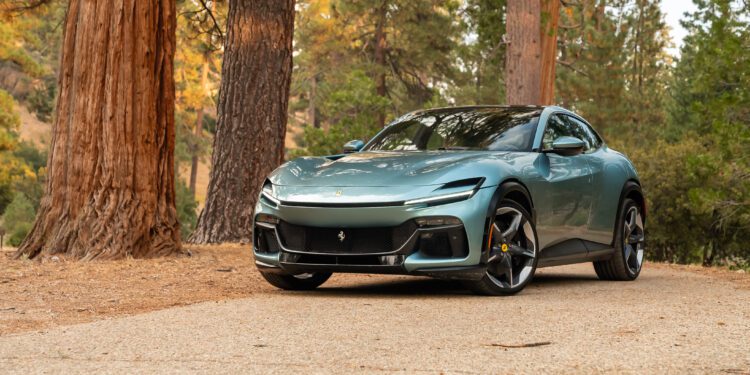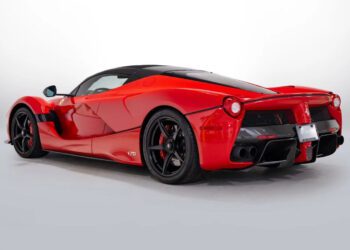Building a super SUV has shifted from an if to a when for most performance brands. Back-to-back years of soaring sales have proven the concept’s viability and quickly made them integral to a low-volume manufacturer’s survival.
However, because the space is so lucrative, brands seem reluctant to experiment beyond the proven formula. Regardless of which badge adorns the nose, you’ll likely encounter similar layout, powertrain, and suspension configurations, often resulting in familiar driving experiences. This leaves the most distinguishing features to the styling and interior departments.
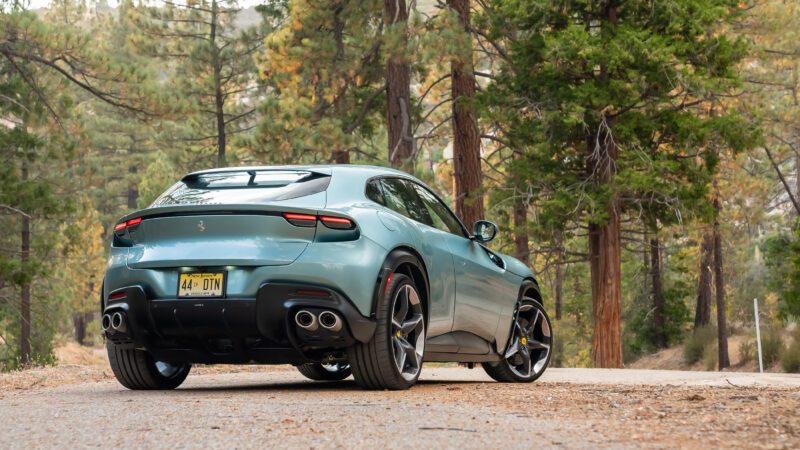
The 2024 Ferrari Purosangue takes a different approach. It rides on an all-new platform built just for it, adopting a front-mid engine layout. It employs a dual-clutch transaxle in the rear for better weight distribution, all-wheel drive, and all-wheel steering. However, its defining feature is the naturally aspirated 6.5-liter V12 nestled beneath its front-hinged hood. The $393,350 Purosangue is a Ferrari, a super SUV second, and the first to truly feel like an exotic machine. By venturing beyond the proven formula, Maranello’s first take on the type defines the segment.
Its name translates to “thoroughbred,” and in the Ferrari Purosangue’s case, it’s more than just a clever marketing ploy. Parts sharing is common in the space, ranging from engines to complete structures, but Maranello developed its first SUV by borrowing only from itself. Despite being larger than the GTC4Lusso’s, its bespoke aluminum chassis is lighter and 30 percent more torsionally rigid. This structure allowed Ferrari to employ a front-hinged hood à la Monza SP1 and a steeply raked A-pillar. A set of rear-hinged doors complement a traditional front pair and provide easy access to the cabin while keeping the Purosangue’s footprint as small as possible. A standard carbon fiber roof with built-in soundproofing is 20 percent lighter than an aluminum panel and lowers its center of gravity.
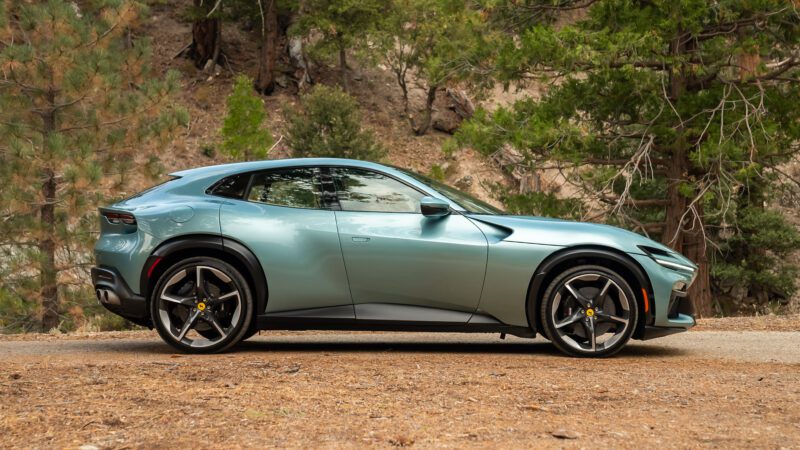
Its homebred bones create a distinct stance and presence. While the Ferrari Purosangue is as wide as a Lamborghini Urus, it’s six inches shorter and two inches lower thanks to its sloped roofline. As such, this Prancing Horse doesn’t immediately come across as a tall SUV; it’s more of a lifted GT, if anything, or the world’s brawniest hatchback. Its cabin also sits closer to the rear axle allowing it to sport a long hood design reminiscent of Maranello’s V12 two-door grand tourers. Stylistically, Ferrari’s choice to forgo a traditional headlight in favor of air intakes adorned with an LED strip, the use of floating wheel arches and rear hatch mounted spoiler only adds to its uniqueness. The Purosangue is equal parts eccentric and functional, and this blend suits it well.
Setting off in the Purosangue for the first time feels, above all else, familiar. You grip a flat-bottomed wheel straight out of a 296 GTB and glance at the digital instrument cluster introduced in the SF90 Stradale. Its engine note conjures up memories of the 812 Superfast, fitting since it employs the racier Competizione’s heads. This SUV is a Ferrari first, and there’s never a moment where it allows you to forget.
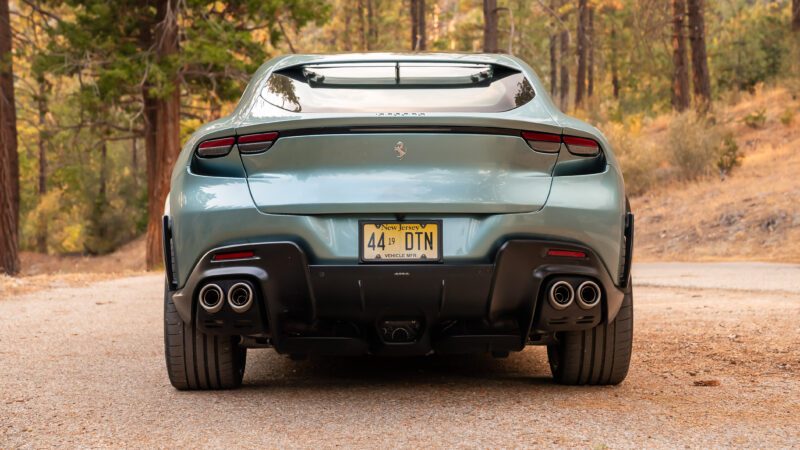
Lean into the throttle, and the feeling only intensifies. Its quad pipes come alive with a note whose pitch rises as you work your way up the tach. The Ferrari Purosangue develops plenty of power, but it makes you work for it. Its 6.5-liter V12 produces a massive 715 horses and 528 pound-feet, and until the recent introduction of the hybrid Lamborghini Urus SE, that made it the most powerful SUV in the segment. However, the Purosangue doesn’t lean on electrification or forced induction. With peak power coming in at 7,750 rpm, just shy of its 8,250 rpm redline, it has to be driven like a supercar to extract its very best. Yet despite these high peak power stats, its 6,250 rpm peak torque figure provides an excellent mid-range shove.
On a twisty road, the Purosangue rewards a slow-in, fast-out approach, with its dual-clutch transaxle ripping upshifts instantly as you rocket out of a bend. Speeds one through seven, a closely spaced set, carry over from the 296 GTB and the SF90 Stradale, while the top eight is longer for cruising on the highway. More importantly, its short gears effectively keep you within the power band while the instantaneous throttle response of its NA V12 allows it to feel every bit as quick as its 715-hp output would suggest. Flat out, you’ll hit 62 mph in 3.3 seconds and 124 in 10.6, maxing out at 193 mph.
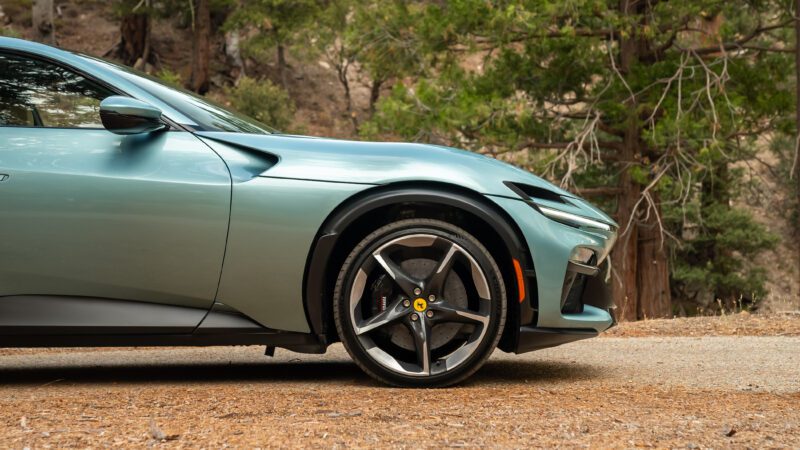
Dive into a corner, and the Ferrari Purosangue again rewards you with a familiar response. Like the 296 GTB, its steering is ultra-light, precise and quick. The subtlest call from the wheel gets a response from the front end. With a dry weight approaching 4,400 pounds, the Purosangue weighs less than the Lamborghini Urus and the Aston Martin DBX707. And despite housing a massive engine behind its front axle, it manages a 49:51 percent weight distribution. As such, you don’t feel a great big mass pushing forward as you begin to turn the wheel. Everything moves in unison.
However, there’s more at play than good weight distribution and sticky Michelin rubber. Developed in collaboration with Multimatic, the Purosangue’s active suspension incorporates True Active Spool Valve dampers, arguably the secret to its success. Each corner is paired with a 48-volt electric motor, and thanks to data fed to them by a myriad of sensors, each damper can respond independently, adjusting ride height and stiffness. During a launch or a heavy braking event, for example, the Purosangue squats to lower its center of gravity thus improving grip.
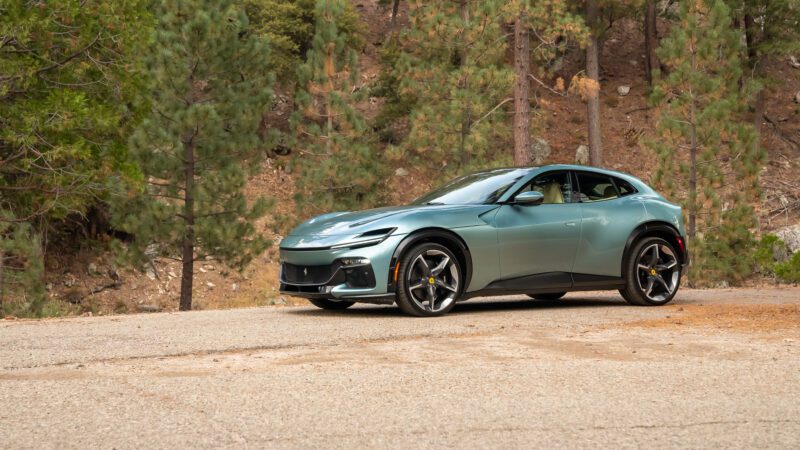
This system works in tandem with an all-wheel drive and steering system, which are fed braking, throttle, and steering input data and adjust accordingly. The Purosnague doesn’t just have pre-set drive modes. It’s actively responding to both you and the road ahead, dialing in the experience and allowing you to hustle up a mountain road with supercar pace.
Its suspension pays dividends around town and on the highway as well. By independently adjusting each corner, it’ll absorb bumps without leaning on an overly plush ride. The Purosangue thus feels settled but never firm, striking a nice balance for a machine meant for daily use. It is a super SUV in the truest sense.
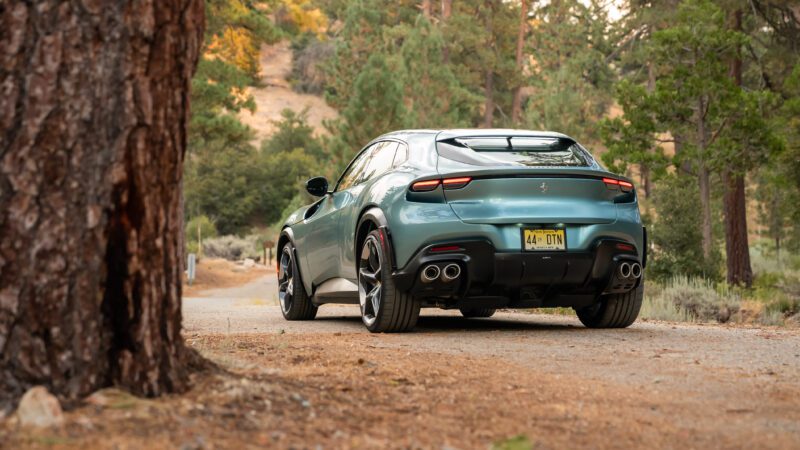
Yet, as proficient as the Ferrari Purosangue is in all things super, leaning so heavily into this persona requires some concessions. Recall its godly, high-revving V12 for a moment. It develops most of its power and torque at higher revs, and although Ferrari claims it’ll produce 80 percent of its torque output at 2,100 rpm, it doesn’t feel as quick as its rivals accelerating at lower speeds. You’ll still have to get deep into the tach to get going.
Its GT-style proportions might make it a stunner, but the Purosangue’s short rear end limits its cargo capacity to 16.7 cubic feet. For context, that’s slightly less than a Porsche Macan.
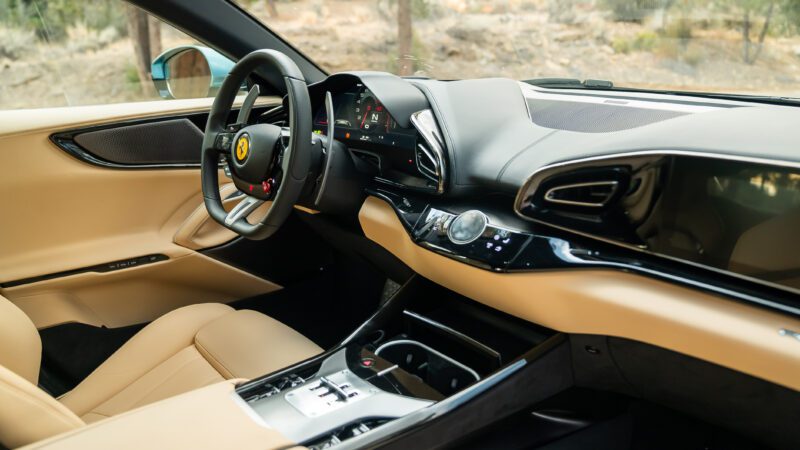
Step inside, and the Ferrari Purosangue greets you with a cabin that’s sporty but effortlessly elegant and arguably the best in the segment from a design point of view. Like the GTC4Lusso, there’s seating for four, with each leather-wrapped chair curving around you almost like the mild bucket seat. Upfront, a sizeable dual-screen layout splits the dash, with each display angles toward the driver and passenger respectively.
However, as gorgeous as this interior is, it’s clear that function follows form. In the center of the dash, you’ll find a small touchscreen with a rotating bezel, which, despite its footprint, controls multiple vital interior functions, often requiring you to swipe between minute menus. Operating it at speed feels like signing something while tying your shoe, and the steering wheel’s haptic feedback buttons require nearly as much attention. Thankfully, if someone is riding shotgun, many of these settings can be adjusted via the passenger display.
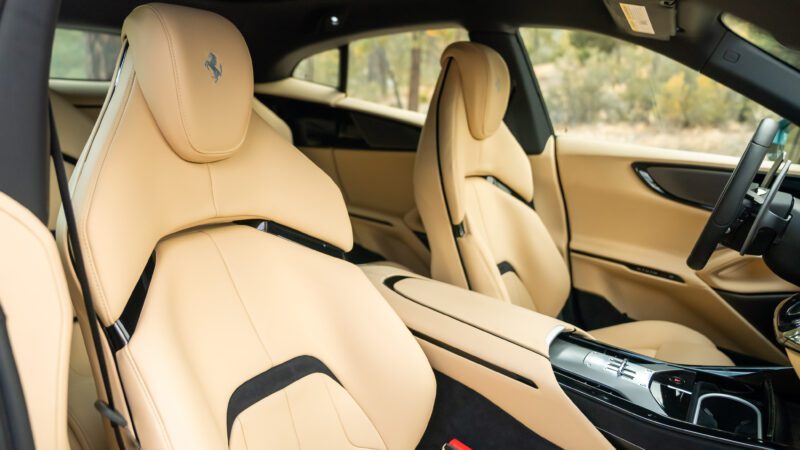
Pricing for the 2024 Ferrari Purosangue starts at $393,350, while this tester bumps that figure up to $506,305 with optional extras included. However, unlike the rest of the super SUV space, Maranello isn’t looking to sell as many as possible, capping its production at fewer than 3,000 units annually, or less than 20 percent of its total output. It was never meant as a volume play, and it’s all the better for it.
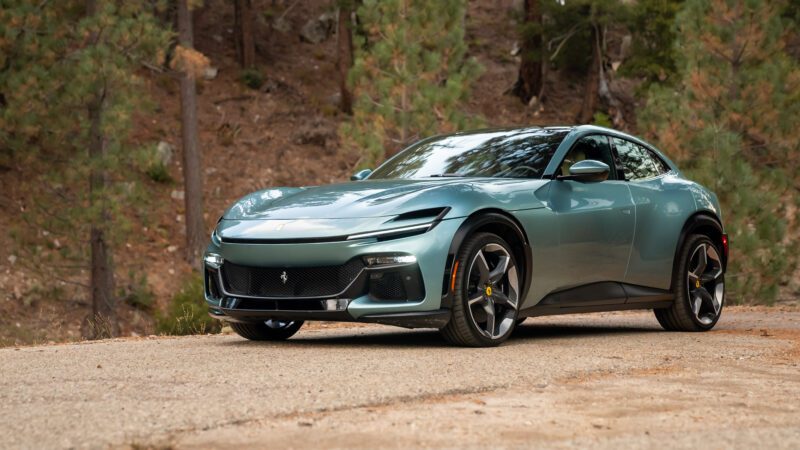
The Ferrari Purosangue may be one of the later entrants to the segment, but it distinguishes itself by doing things differently. It doesn’t follow established formulas, from engine layout to cylinder count and bespoke platform. Yet, by straying further and incorporating a revolutionary active suspension system from the wizards at Multimatic, it blends its excellent straight-line performance and characterful V12 with handling that’s befitting of a Prancing Horse.
From big and small details, the Purosangue feels like a Ferrari first and an SUV second. It’s arguably the first super SUV that feels like a proper exotic. And while achieving this persona requires some concessions, they don’t detract from what makes Maranello’s first take on the type so special. The Purosangue isn’t just another super SUV. It defines the segment.


